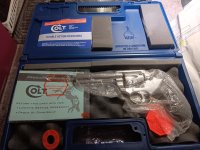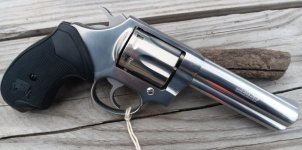silicosys4
Member
- Joined
- Aug 30, 2024
- Messages
- 253
- Reaction score
- 734
Turn rings are a fact of life.
Here is a true unfired-since-factory Colt DSII I purchased this year NOS.
Its got a turn ring, and as the first owner I have not fired or turned this revolver yet. I have opened it once to replace the chamber insert.
This is exactly how it came.


I question how someone even finds used revolvers without a turn line.
I think I've only purchased one revolver ever that didn't have a turn ring, and that was a used USFA with only a cylinder or two through it in its lifetime. Not even a hint of a turn line, but that's because Colt SAA and clone lockwork won't leave a turn line if timed and handled correctly.
Here is a true unfired-since-factory Colt DSII I purchased this year NOS.
Its got a turn ring, and as the first owner I have not fired or turned this revolver yet. I have opened it once to replace the chamber insert.
This is exactly how it came.


I question how someone even finds used revolvers without a turn line.
I think I've only purchased one revolver ever that didn't have a turn ring, and that was a used USFA with only a cylinder or two through it in its lifetime. Not even a hint of a turn line, but that's because Colt SAA and clone lockwork won't leave a turn line if timed and handled correctly.
Last edited:

